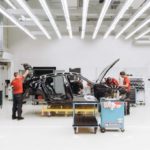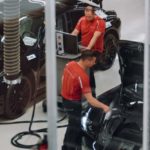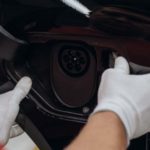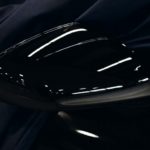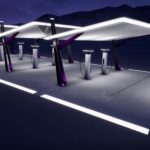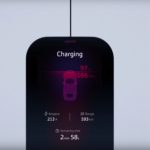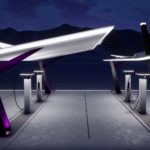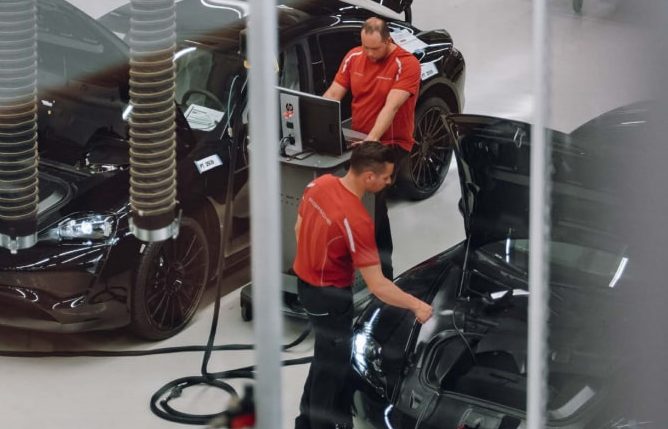
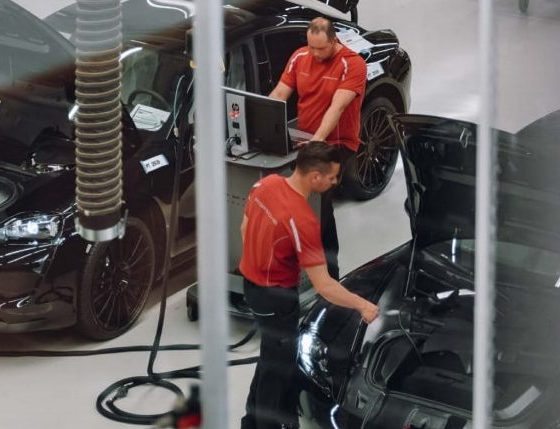
News
Porsche Mission E pre-production pics reveal new details about Tesla rival
Details of the pre-production variant of Porsche’s rival to the Tesla Model S, the Mission E, was recently revealed in the German carmaker’s Annual & Sustainability report for 2017. The images of the Mission E pre-production units reveal similarities and changes to the vehicle’s eye-catching concept that Porsche revealed during the 2015 Frankfurt Motor Show.
Details of the pre-production Mission E in Porsche’s recent report include the electric car’s passenger doors, which appear to have taken a step away from the concept version’s suicide doors. The pre-production design’s front, however, carries over much of the details found on the concept, including the eye-catching aerodynamic lines that bend into the car’s headlights.
The pre-production Mission E’s storage spaces were also visible in the images provided by the German legacy carmaker. Based on the photos, the frunk of the pre-production Mission E appears to be in the same ballpark as the Model 3. Thanks to its broad-hipped design, the Mission E’s rear trunk seems to have a lot of space as well.
Also included in the report is an image of the vehicle’s charge port, which is designed to be compatible with the IONITY charging network. As we noted in a previous report, the IONITY network, which is built in collaboration by the Volkswagen Group, BMW Group, Daimler AG, and the Ford Motor Company, is designed to rival Tesla’s Supercharger network. IONITY exceeds the current output of Tesla’s 120 kW Superchargers, with an output of 350 kW. With this charging infrastructure in place, Porsche claims that the Mission E could gain 248 miles of range in as little as 15 minutes.
- Details of the pre-production units of the Mission E were featured in Porsche’s 2017 Annual & Sustainability report. [Credit: Porsche]
- Details of the pre-production units of the Mission E were featured in Porsche’s 2017 Annual & Sustainability report. [Credit: Porsche]
- Details of the pre-production units of the Mission E were featured in Porsche’s 2017 Annual & Sustainability report. [Credit: Porsche]
- Details of the pre-production units of the Mission E were featured in Porsche’s 2017 Annual & Sustainability report. [Credit: Porsche]
- Details of the pre-production units of the Mission E were featured in Porsche’s 2017 Annual & Sustainability report. [Credit: Porsche]
According to a recent report from GearBrain, however, Porsche’s pay system for the IONITY network would be on the other side of the spectrum as Tesla’s Superchargers. Tesla’s high-powered Superchargers charge Model 3 owners every time they use the infrastructure, but owners of the Model S and Model X — the Elon Musk-led company’s flagships — can use the chargers for free.
In a statement to the publication, Porsche’s deputy chairman of the executive board Lutz Meschke noted that the company would bill Mission E owners for charging services from day one of ownership. The executive also noted that the rates for the IONITY network would be comparable to the prices of gasoline. The Porsche executive also downplayed the business model of Tesla’s charging infrastructure, stating that the Supercharger network “was only free for a while.”
“Yes, but it (Tesla’s Supercharger network) was only free for a while. You can not run things like this; you have to earn money from these services. We want to earn money with the new products and services,” Meschke said.
The Porsche executive’s statement about the Supercharger network’s rates is only partly true, of course, as only Model 3 owners are adopting a pay-per-use model. In a recent statement on its website announcing a price adjustment for the service, Tesla even asserted that the company is not looking to make money from the Supercharger network.
“Tesla is committed to ensuring that Supercharger will never be a profit center,” Tesla wrote.

Elon Musk
Elon Musk’s X will start using a Tesla-like software update strategy
The initiative seems designed to accelerate updates to the social media platform, while maintaining maximum transparency.

Elon Musk’s social media platform X will adopt a Tesla-esque approach to software updates for its algorithm.
The initiative seems designed to accelerate updates to the social media platform, while maintaining maximum transparency.
X’s updates to its updates
As per Musk in a post on X, the social media company will be making a new algorithm to determine what organic and advertising posts are recommended to users. These updates would then be repeated every four weeks.
“We will make the new 𝕏 algorithm, including all code used to determine what organic and advertising posts are recommended to users, open source in 7 days. This will be repeated every 4 weeks, with comprehensive developer notes, to help you understand what changed,” Musk wrote in his post.
The initiative somewhat mirrors Tesla’s over-the-air update model, where vehicle software is regularly refined and pushed to users with detailed release notes. This should allow users to better understand the details of X’s every update and foster a healthy feedback loop for the social media platform.
xAI and X
X, formerly Twitter, has been acquired by Elon Musk’s artificial intelligence startup, xAI last year. Since then, xAI has seen a rapid rise in valuation. Following the company’s the company’s upsized $20 billion Series E funding round, estimates now suggest that xAI is worth tens about $230 to $235 billion. That’s several times larger than Tesla when Elon Musk received his controversial 2018 CEO Performance Award.
As per xAI, the Series E funding round attracted a diverse group of investors, including Valor Equity Partners, Stepstone Group, Fidelity Management & Research Company, Qatar Investment Authority, MGX, and Baron Capital Group, among others. Strategic partners NVIDIA and Cisco Investments also continued support for building the world’s largest GPU clusters.
News
Tesla FSD Supervised wins MotorTrend’s Best Driver Assistance Award
The decision marks a notable reversal for the publication from prior years, with judges citing major real-world improvements that pushed Tesla’s latest FSD software ahead of every competing ADAS system.

Tesla’s Full Self-Driving (Supervised) system has been named the best driver-assistance technology on the market, earning top honors at the 2026 MotorTrend Best Tech Awards.
The decision marks a notable reversal for the publication from prior years, with judges citing major real-world improvements that pushed Tesla’s latest FSD software ahead of every competing ADAS system. And it wasn’t even close.
MotorTrend reverses course
MotorTrend awarded Tesla FSD (Supervised) its 2026 Best Tech Driver Assistance title after extensive testing of the latest v14 software. The publication acknowledged that it had previously criticized earlier versions of FSD for erratic behavior and near-miss incidents, ultimately favoring rivals such as GM’s Super Cruise in earlier evaluations.
According to MotorTrend, the newest iteration of FSD resolved many of those shortcomings. Testers said v14 showed far smoother behavior in complex urban scenarios, including unprotected left turns, traffic circles, emergency vehicles, and dense city streets. While the system still requires constant driver supervision, judges concluded that no other advanced driver-assistance system currently matches its breadth of capability.
Unlike rival systems that rely on combinations of cameras, radar, lidar, and mapped highways, Tesla’s FSD operates using a camera-only approach and is capable of driving on city streets, rural roads, and freeways. MotorTrend stated that pure utility, the ability to handle nearly all road types, ultimately separated FSD from competitors like Ford BlueCruise, GM Super Cruise, and BMW’s Highway Assistant.
High cost and high capability
MotorTrend also addressed FSD’s pricing, which remains significantly higher than rival systems. Tesla currently charges $8,000 for a one-time purchase or $99 per month for a subscription, compared with far lower upfront and subscription costs from other automakers. The publication noted that the premium is justified given FSD’s unmatched scope and continuous software evolution.
Safety remained a central focus of the evaluation. While testers reported collision-free operation over thousands of miles, they noted ongoing concerns around FSD’s configurable driving modes, including options that allow aggressive driving and speeds beyond posted limits. MotorTrend emphasized that, like all Level 2 systems, FSD still depends on a fully attentive human driver at all times.
Despite those caveats, the publication concluded that Tesla’s rapid software progress fundamentally reshaped the competitive landscape. For drivers seeking the most capable hands-on driver-assistance system available today, MotorTrend concluded Tesla FSD (Supervised) now stands alone at the top.
News
Elon Musk’s Grokipedia surges to 5.6M articles, almost 79% of English Wikipedia
The explosive growth marks a major milestone for the AI-powered online encyclopedia, which was launched by Elon Musk’s xAI just months ago.

Elon Musk’s Grokipedia has grown to an impressive 5,615,201 articles as of today, closing in on 79% of the English Wikipedia’s current total of 7,119,376 articles.
The explosive growth marks a major milestone for the AI-powered online encyclopedia, which was launched by Elon Musk’s xAI just months ago. Needless to say, it would only be a matter of time before Grokipedia exceeds English Wikipedia in sheer volume.
Grokipedia’s rapid growth
xAI’s vision for Grokipedia emphasizes neutrality, while Grok’s reasoning capabilities allow for fast drafting and fact-checking. When Elon Musk announced the initiative in late September 2025, he noted that Grokipedia would be an improvement to Wikipedia because it would be designed to avoid bias.
At the time, Musk noted that Grokipedia “is a necessary step towards the xAI goal of understanding the Universe.”
Grokipedia was launched in late October, and while xAI was careful to list it only as Version 0.1 at the time, the online encyclopedia immediately earned praise. Wikipedia co-founder Larry Sanger highlighted the project’s innovative approach, noting how it leverages AI to fill knowledge gaps and enable rapid updates. Netizens also observed how Grokipedia tends to present articles in a more objective manner compared to Wikipedia, which is edited by humans.
Elon Musk’s ambitious plans
With 5,615,201 total articles, Grokipedia has now grown to almost 79% of English Wikipedia’s article base. This is incredibly quick, though Grokipedia remains text-only for now. xAI, for its part, has now updated the online encyclopedia’s iteration to v0.2.
Elon Musk has shared bold ideas for Grokipedia, including sending a record of the entire knowledge base to space as part of xAI’s mission to preserve and expand human understanding. At some point, Musk stated that Grokipedia will be renamed to Encyclopedia Galactica, and it will be sent to the cosmos.
“When Grokipedia is good enough (long way to go), we will change the name to Encyclopedia Galactica. It will be an open source distillation of all knowledge, including audio, images and video. Join xAI to help build the sci-fi version of the Library of Alexandria!” Musk wrote, adding in a later post that “Copies will be etched in stone and sent to the Moon, Mars and beyond. This time, it will not be lost.”
